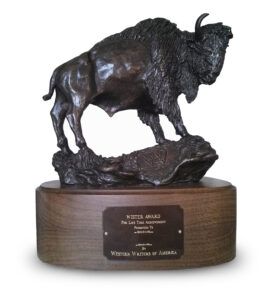Cold War Mandarin: Ngo Dinh Diem and the Origins of America’s War in Vietnam, 1950-1963
by Seth Jacobs. Rowman and Littlefield Publishers, Lanham, Md., 2006, softcover $19.95.
Mandarin: a member of any elite group, sometimes one who is pompous, arbitrary, etc.
Seth Jacobs deplores the lack of a full scale, “definitive” biography of Ngo Dinh Diem, the prime minister of South Vietnam at that country’s inception and formation in 1954. In his book Cold War Mandarin: Ngo Dinh Diem and the Origins of America’s War in Vietnam, 1950-1963, he undertakes to remedy this and concludes that none of America’s Cold War allies did more to undermine the power and reputation of the United States than did Ngo Dinh Diem.
As Jacobs begins his narrative in 1950, the French appoint Bao Dai head of the French-dominated government of Vietnam, and the rival Viet Minh opposition gains strength. Diem, who agreed with neither form of government, convinced the U.S. State Department that only a nationalist Vietnamese leader like himself, who was not compromised by collaboration with either the French or the Communists, could form a government in the South. This appealed to America’s inordinate fear of monolithic communism. Diem was probably the only Vietnamese known to most Americans. In the United States, he gained the backing of important Catholic leaders including Archbishop (later Cardinal) Spellman.
When the French left and the United States assumed the anti-Communist protection of South Vietnam, Diem was a natural anti-French, anti-Communist leader. Jacobs describes how Diem moved swiftly to eliminate all opposition, ousting Bao Dai and appointing himself president of the newly proclaimed Republic of Vietnam (RVN). Diem’s harsh and sometimes brutal tactics alienated the Vietnamese people and created more enemies for his regime than they eliminated. Jacobs describes in detail how resistance to Diem’s regime grew in the South.
During the Eisenhower administration, as Jacobs points out, the story of Vietnam was really two stories: first, Diem’s performance as South Vietnam’s leader, and second, the way his leadership was perceived in the United States. His brutal and inefficient regime and his favoritism toward Catholics alienated millions of South Vietnamese from their government, thus increasing the nation’s vulnerability to communism. In the United States, by contrast, Diem was seen as a miracle man who had eliminated divisive sects and turned his nation into a showcase of freedom, thereby deepening the U.S. commitment to his regime.
John F. Kennedy replaced Dwight Eisenhower as president in 1962. Jacobs illustrates how during the Kennedy administration, optimistic reports to Washington bore little relationship to what was happening on the ground in South Vietnam. He also describes Diem’s failure to bring democracy to South Vietnam. The people were alienated by his sometimes brutal rule and did not miss him when he fell. Jacobs describes in great detail the growth of the coup against Diem by his generals. The rapidity of the regime’s collapse testified to Diem’s unpopularity.
The author discusses Resolution 15 by the North Vietnamese and the establishment of the National Liberation Front (NLF) in the South, although he does not touch upon the role of these two elements in the demise of Ngo Dinh Diem, as the book’s title would suggest. Instead he argues that the North Vietnamese and the NLF sought to defeat Diem before the Americans could send major forces to Vietnam, and that Diem’s death with American complicity set the United States and North Vietnam on the road to escalation and war.
Jacobs’ attempt at penning a “definitive” biography of Ngo Dien Diem pays off. His book is a well-researched and careful study of Ngo Dinh Diem’s rule in South Vietnam.
Originally published in the August 2007 issue of Vietnam Magazine. To subscribe, click here.




